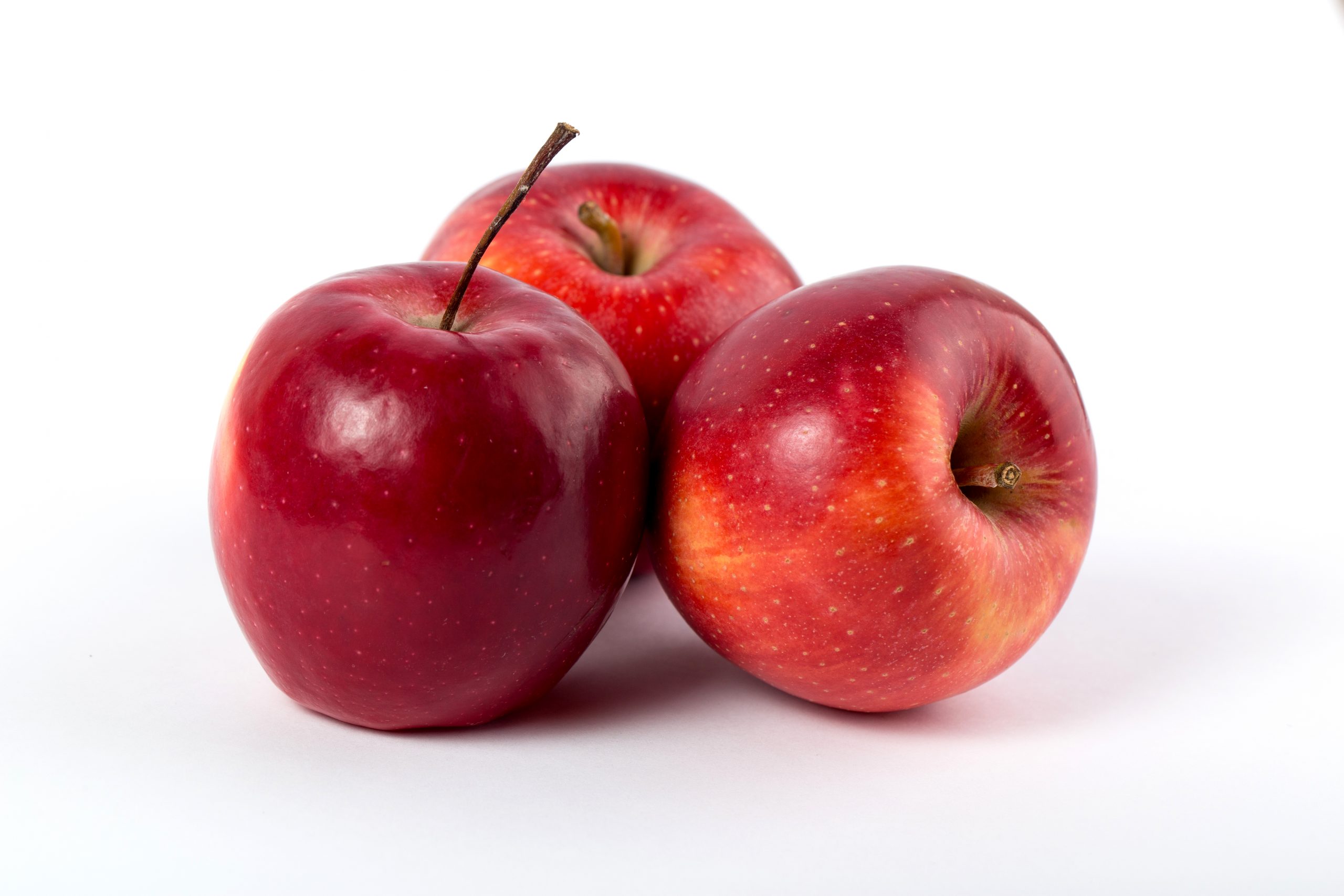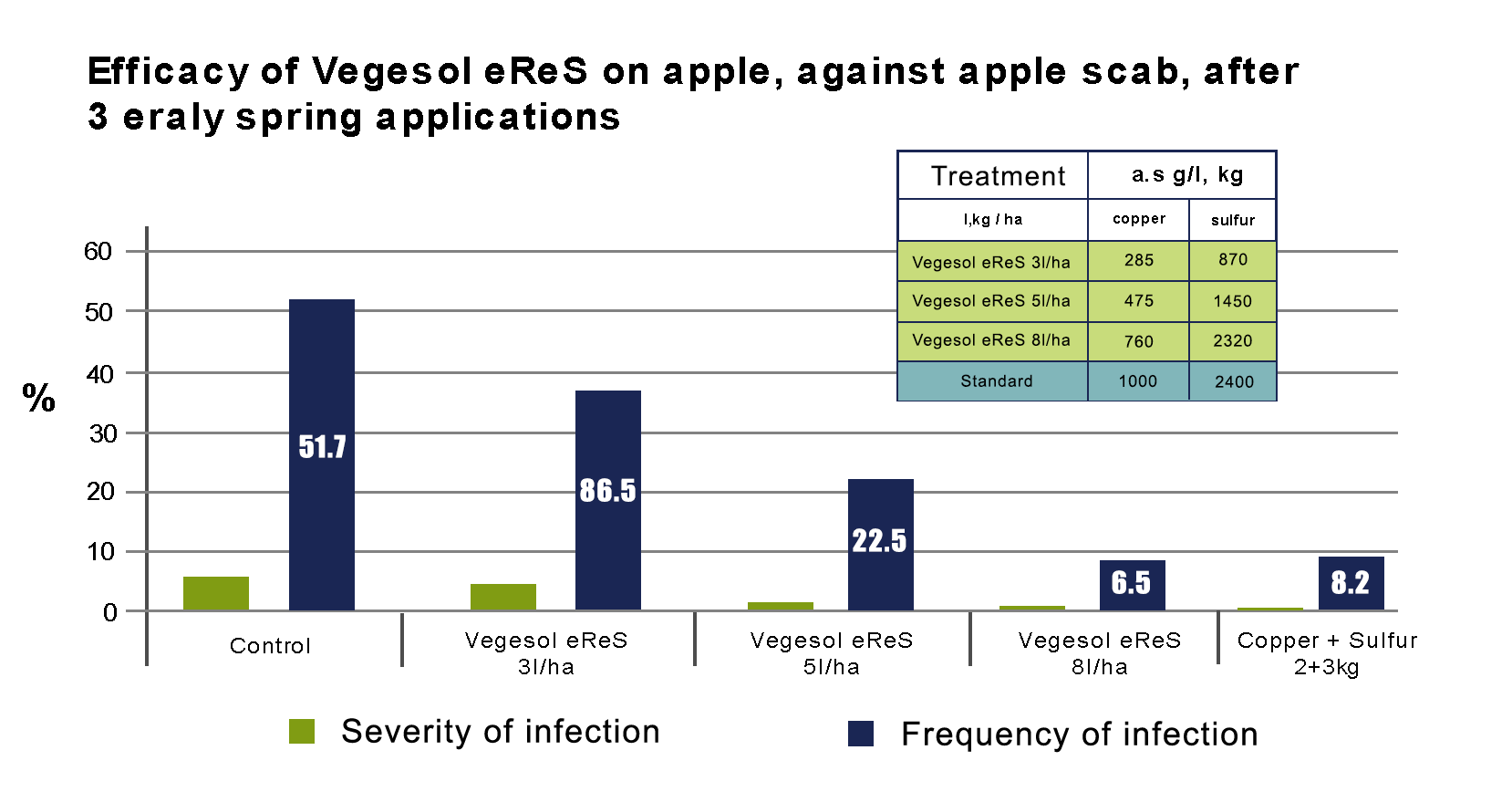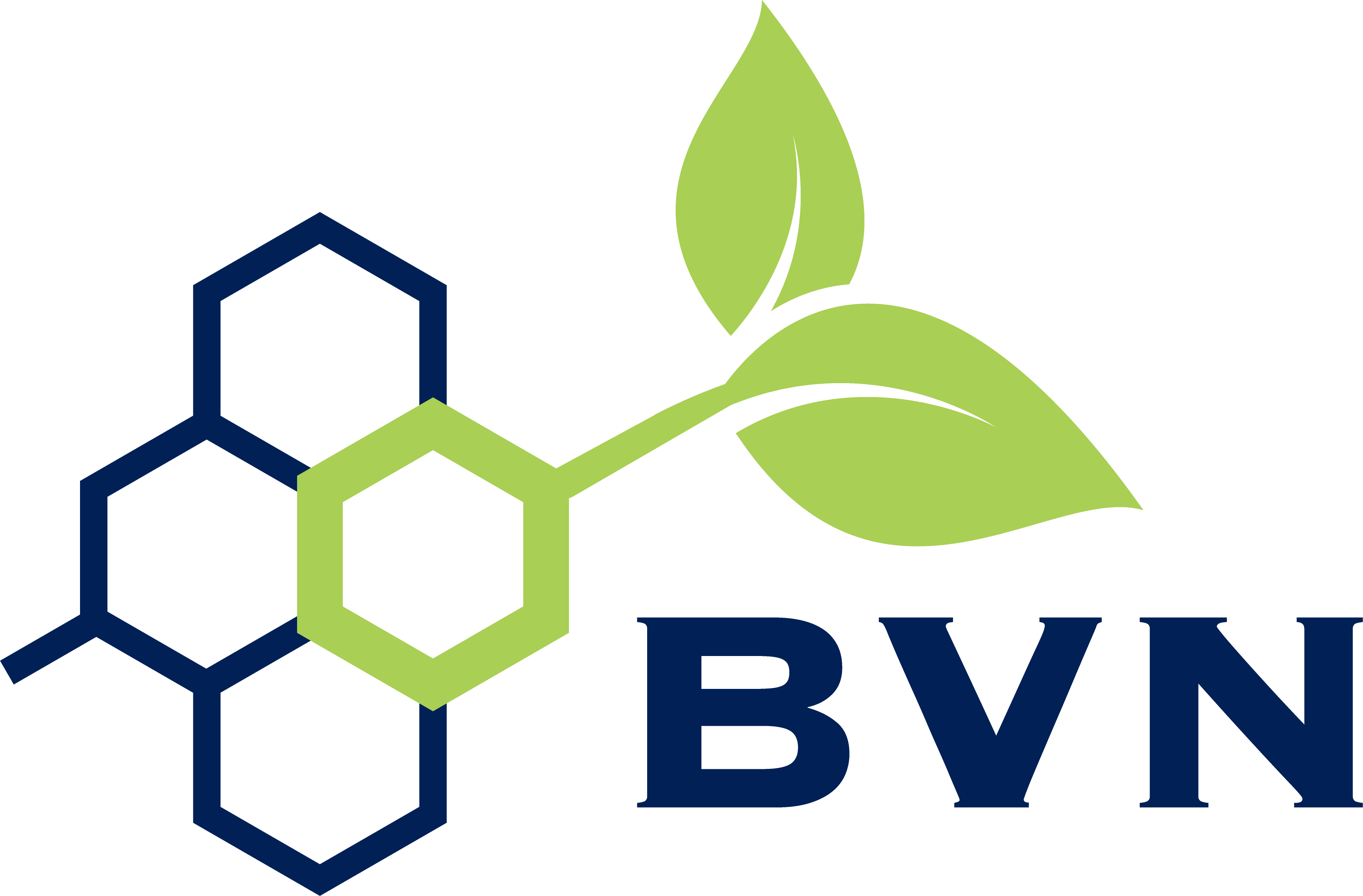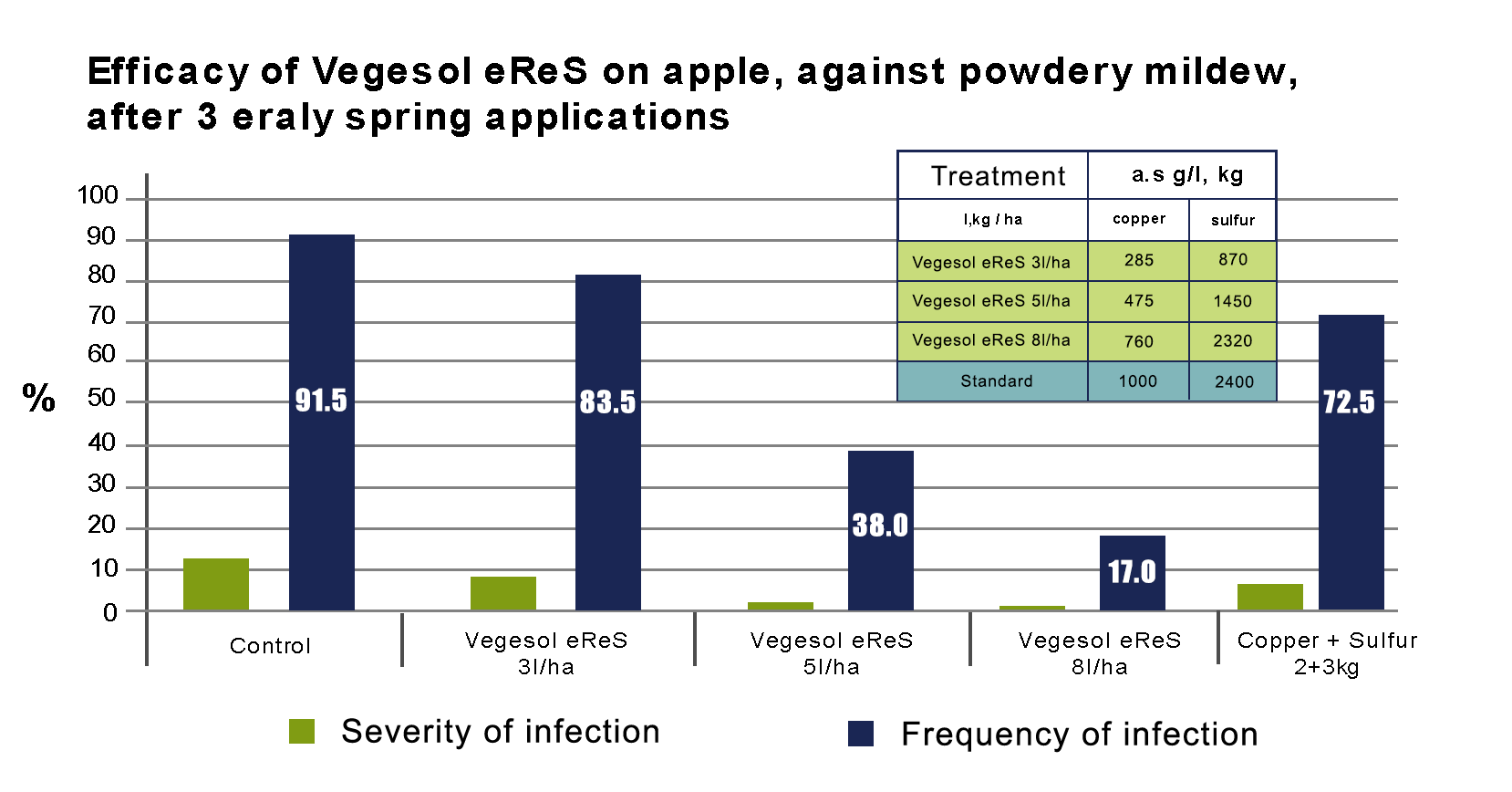The effectiveness of Vegesol eReS
in the early spring treatment of apple orchards
The two main diseases affecting apple orchards are scab and powdery mildew. Overcoming the pathogens of these diseases requires regular protection throughout almost the entire growing season. The varieties are susceptible to these diseases to varying degrees, so defence is generally chemically based. Fortunately, there are many highly effective preparations available for preventing both these diseases. However, their use can require great expertise in order to avoid resistance.
Vegesol eReS is a fungicide used mainly for delayed-dormant application or dormant application in a number of cultures. However, the preparation can also be used during the vegetation period, as its oil content aims only to improve adhesion and, when used in the recommended doses, does not cause phytotoxicity in the foliage.

The necessity of protection against scab can be determined with the help of the climate parameters observed in the orchard. Treatment can be effectively applied depending on the start of ascospore discharge and the weather conditions required for infestation, most commonly even before flowering. Cool spring weather and leaf wetness periods limit the range of active ingredients that can be used effectively. We can safely rely on copper during these times as well, since copper as an active ingredient is capable of destroying germinating ascoconidia even in extremely small quantities; there is no resistance against it. The difficulty of using copper is that, since it is a contact active substance, it has to be present on the plant surface at the time and location where the fungus germinates.
Compared to competing combinations, that is where Vegesol eReS offers outstanding performance. Due to its sunflower oil content, the sprayed layer undergoes polymerisation after forming a film on the plant surface, meaning it remains on the plant in a cross-linked form that is difficult to wash off. This helps the copper active ingredient resist being washed off by rains and dew, ensuring it can be at the right place at the right time: when the fungus germinates. This is a patented technology and is unique on the Hungarian market of plant protection products.
The demonstration experiments presented were conducted in 2017 in a GEP quality assurance system. The first treatment was applied when the buds burst, the second when the buds were swollen, and the third in the tight cluster stage. The evaluation was performed during flowering, by which time there were significant differences between the parcels. The study was conducted in 4 repetitions. A large degree of infestation was found on the control parcels, where the symptoms of
scab were present on more than half of the leaves even during flowering. The three different doses of Vegesol eReS provided different degrees of protection for the plants, with the greatest protection offered by the highest dose. The standard combination was copper-hydroxide 50 WP (2 kg/ha) + sulphur WG (3 kg/ha). This treatment yielded good results, as well. The greatest difference was in the amount of applied copper active ingredient, as, thanks to BVN’s patented film forming technology, the smaller amount of copper (76% of the competing product) achieved the same biological effects as the standard (Figure 1).

Figure 1. Efficacy of Vegesol eReS on apple, against apple scab, after 3 early spring applications, according to the severity and the frequency of infection, based on leaf symptoms. (early April evaluation, 2017, Romania)
As the first element of the long-lasting defence strategy against scab, it is recommended to spray Vegesol eReS with the maximum permitted dose of 5 l/ha during the early spring treatments applied in March. This effective preventive protection provides a good basis for the systemic products to be used in the intensive growth period following flowering.
Reducing environmental loads is one of the most important pursuits of our day, and this also applies to agriculture. In the spirit of this endeavour, we strongly recommend that farmers use BVN’s oily products. The use of our copper products allows farmers to easily comply with the limit of 6 kg/ha for the application of copper substances without having to forego the excellent efficacy they are accustomed to.
Vegesol eReS is freely available and is licensed for use in organic farming.
Protection against powdery mildew begins every year at the time of pruning, as terminal buds are almost always infected. The primary infection starting from these buds is difficult to stop, with conidia starting dispersal in the tight cluster stage. The goal is to stop the formation of conidia on primary infection sources and to prevent secondary infection. This is naturally worth pairing with systemic active ingredients, especially before and after flowering. Sulphur can also provide excellent efficacy and forms an integral part of the technology. If only sulphur is available (bioproduction), the spraying has to be applied at more frequent intervals, and the duration of protection offered by the product becomes a very important factor. The above statement that the active ingredient in the contact fungicide has to be at the place where and at the time when the fungus attacks naturally also applies to sulphur. This is only viable if the first rain or dew does not wash the sprayed dose off of the plant surface.

That is when Vegesol eReS really shines in comparison with competing sulphur-based fungicides. On the one hand, its liquid formula facilitates both dosage and work, and, on the other hand, thanks mostly to its sunflower oil content, the patented film-forming technology provides the necessary long-lasting effect. The oil, which undergoes polymerisation in oxidative environments, prevents the sulphur from being washed off.
Let’s take a look at the practical experiences.
In the demonstration experiment, we applied treatments on three occasions in the early spring (i.e. before flowering) to the Jonathan variety, which is sensitive to powdery mildew. Increasing doses of Vegesol eReS showed improved efficacy. The maximum permitted dose of 5 l/ha gave a better result than other sulphur-based preparations, while the amount of sulphur applied by Vegesol eReS was only 60% of the competition. Infections on shoots was almost 100% in the control parcels (Figure 2).
Vegesol eReS can provide very good results when controlling the two most important diseases affecting apple orchards in the early spring (i.e. bud burst to flowering), both in itself and, if necessary, when combined with a systemic fungicide.

Figure 2. Efficacy of Vegesol eReS on apple, against powdery mildew, after 3 early spring applications, according to the severity and the frequency of infection, based on leaf symptoms. (early April evaluation, 2017, Romania)

